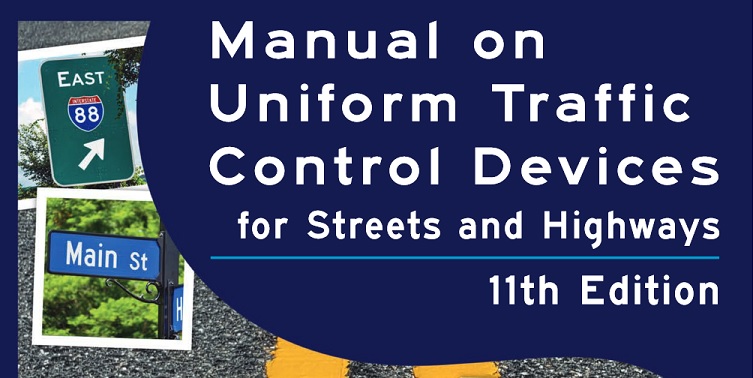The US Federal Highway Administration (FHWA) released the 11th edition of the Manual on Uniform Traffic Control Devices for Streets and Highways, known as the MUTCD.

The manual, last updated edition in 2009, is the national standard for traffic signs, signals, and pavement markings to ensure a uniform and predictable environment for people who walk, bike, and drive. It is an important guide used every day by transportation professionals for roadway safety, and the 11th edition incorporates extensive input from members of the public.
"It has been over a decade since the MUTCD was last updated and a lot has changed in that time," said Federal Highway Administrator Shailen Bhatt. "The new MUTCD gives greater consideration to all road users, who deserve to be safe when traveling on our streets and roads. It will also help improve the public's travel experience whether driving on an Interstate or crossing the street in cities and towns across America."
As part of the process of updating the MUTCD, the FHWA sought and incorporated input from the public nationwide, including state and local traffic engineers, traffic control device technicians, and other stakeholders.
The MUTCD 11th edition reflects changes in how Americans travel since the last update of the manual over a decade ago. It also streamlines processes and makes permanent a number of traffic control device applications that previously required special approval. The new MUTCD includes pedestrian safety enhancements such as the rectangular rapid-flashing beacon and crosswalk marking patterns that are proven to be more visible. The updated MUTCD supports USDOT's National Roadway Safety Strategy, which adopts a multi-layered approach with the ambitious goal of zero deaths on the nation's roads.
By requiring updates to the MUTCD every four years, the Bipartisan Infrastructure Law will also ensure that traffic control device standards and guidelines are responsive to the needs of the traveling public, and to new technologies.
The MUTCD does not restrict communities from designing walkable, transit-oriented roadways or high-speed highways as that community determines appropriate to serve its needs. Rather, the MUTCD is about directly communicating with the road user, in an effective manner, about how the roadway is intended to be used in the context and constraints of its physical space, design features, and surrounding environment. If a community decides to provide bike lanes or a designated pedestrian area separated from vehicles, the MUTCD gives the community the traffic control devices to communicate that to all road users safely and effectively.




